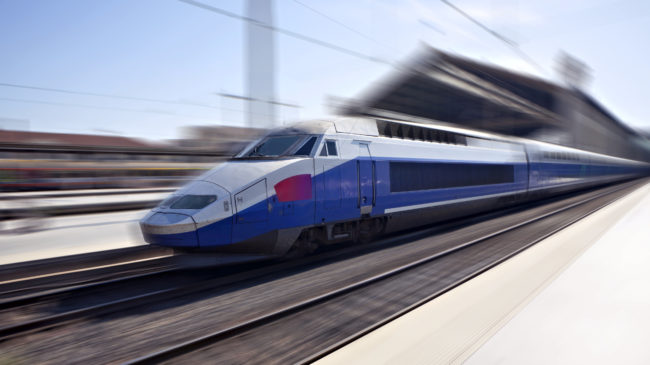The results of the latest California cap and trade auction are in, and they are not good — especially for the state’s high-speed rail project.
After February’s auction of pollution licenses brought $613 million to state coffers, the haul for the quarterly auction in May was a paltry $25 million. The low figure was expected due to the coronavirus pandemic and shelter-in-place orders reducing travel and thus the demand for emissions allowances. But since the high-speed rail project is now primarily funded by its 25 percent share of cap and trade proceeds, unsuccessful auctions like this could ultimately stymie its funding and construction.
The high-speed rail project is under growing bipartisan pressure. In Feb. 2019, Gov. Gavin Newsom suggested scaling back the project during his State of the State Speech, but quickly walked that idea back. Next, multiple State Assembly members, Democrats from Southern California, floated the idea of diverting bullet train money to urban mass transit projects. This year, Assemblymembers Luz Rivas, D-Los Angeles, and Laura Friedman, D-Glendale, introduced a bill that would require the California High-Speed Rail Authority (CHSRA) to prioritize projects that increased ridership the most, which implicitly means those in densely populated Southern California.
Assemblymember Jim Patterson, R-Fresno, proposed legislation that would prevent the CHSRA from evading its mandate not to rely on operating subsidies. Most recently, Assemblymembers Vince Fong, R-Bakersfield, and Kevin Kiley, R-Sacramento, proposed a two-year halt to the high-speed rail project, with its cap-and-trade funds being diverted to education.
The legislators see that it is abundantly clear that the high-speed rail project will not deliver on what was promised to voters back in 2008. If it is ever completed, the bullet train will not be able to run without operating subsidies. It will not carry passengers from San Francisco to Los Angeles in less than three hours. It will not meaningfully reduce greenhouse gas emissions.
Not only will it fail to deliver on those crucial guarantees, but the long-term trends may make the project’s forecast even bleaker. When voters approved the high-speed rail project, planners expected California’s population to reach 60 million by 2050, meaning that many more potential train passengers would be choosing among intercity transportation modes.
But in recent years, California population growth has been grinding to a halt. The most recent Department of Finance estimates show California’s population increased by just 0.2% last year. If that growth rate becomes the new normal, the state would only have 42 million people in 2050. And even 0.2% annual population growth may be an overestimate. This year, California could well see a population decline as COVID-19 worries reduce immigration, and a growing number of tech workers are allowed to work remotely—and sometimes out of state.
Hopefully, COVID-19 is a distant memory long before California high-speed rail service commences – if it ever does – but ongoing fear of contagion and changes of habit could trigger a drop in mass transit use and travel patterns for the foreseeable future. To the extent that people take trips between 200 and 500 miles, they will more likely travel by car than share space with potentially infected strangers on planes, buses, or trains until there’s a vaccine for COVID-19.
Amtrak ridership declined 95% between March and April. In the Bay Area, BART is planning for 70% lower rail ridership in the 2020-2021 fiscal year, with only partial recovery in the following years. The International Air Transport Association says it doesn’t expect 2019 levels of air travel “to be exceeded until 2023” and even in 2025 global travel demand will still be “10% lower than the previous forecast” due to long-term impacts of the coronavirus pandemic.
Lower population growth and reduced propensity to travel should force similar downward revisions to the state’s high-speed ridership estimates, which were greatly inflated to begin with. And with significantly diminished cap-and-trade proceeds to fund the project, the time for a reckoning is at hand. The state legislature should demand updated and realistic cost and ridership projections. Since the costs, ridership figures, and timeline are wildly different than what voters approved in 2008, the electorate should then get to decide if, and how, the high-speed rail project continues.
A version of the column originally appeared in the Orange County Register.

